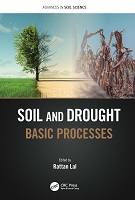Chapter 11 Ancient Infrastructure Offers Sustainable Agricultural Solutions to Dryland Farming
Proposal review
Author(s)
Pailes, Matthew C.
Norman, Laura M.
Baisan, Christopher H.
Meko, David M.
Gauthier, Nicolas
Villanueva- Diaz, Jose
Dean, Jeff
Martínez, Jupiter
Kessler, Nicholas V.
Towner, Ron
Language
EnglishAbstract
In arid and semiarid landscapes, water is the primary limiting resource for human activity and ecosystem functioning. More than 40% of the world’s population lives in dryland environments (White and Nackoney, 2003). In these landscapes annual rainfall can vary greatly and be highly unpredictable both in space and time. Longer intervals between precipitation events are also highly erratic and global atmosphere-ocean teleconnections—such as unusually cool Pacific Sea surface temperatures during the La Niña phase of the El Niño -Southern Oscillation can trigger multi-decadal “megadroughts” (McCabe et al., 2004; Cook et al., 2016; Routson et al., 2016; Steiger et al., 2019). Soil moisture and local ecohydrology constrain the extent and intensity of food production possible through agriculture. Complex combinations of social and physical infrastructure have sustained population growth and managed hydroclimate risks in the past. Indigenous soil and water conservation has been tested over millennia to support agriculture (Johnson et al. 2021).


 Download
Download